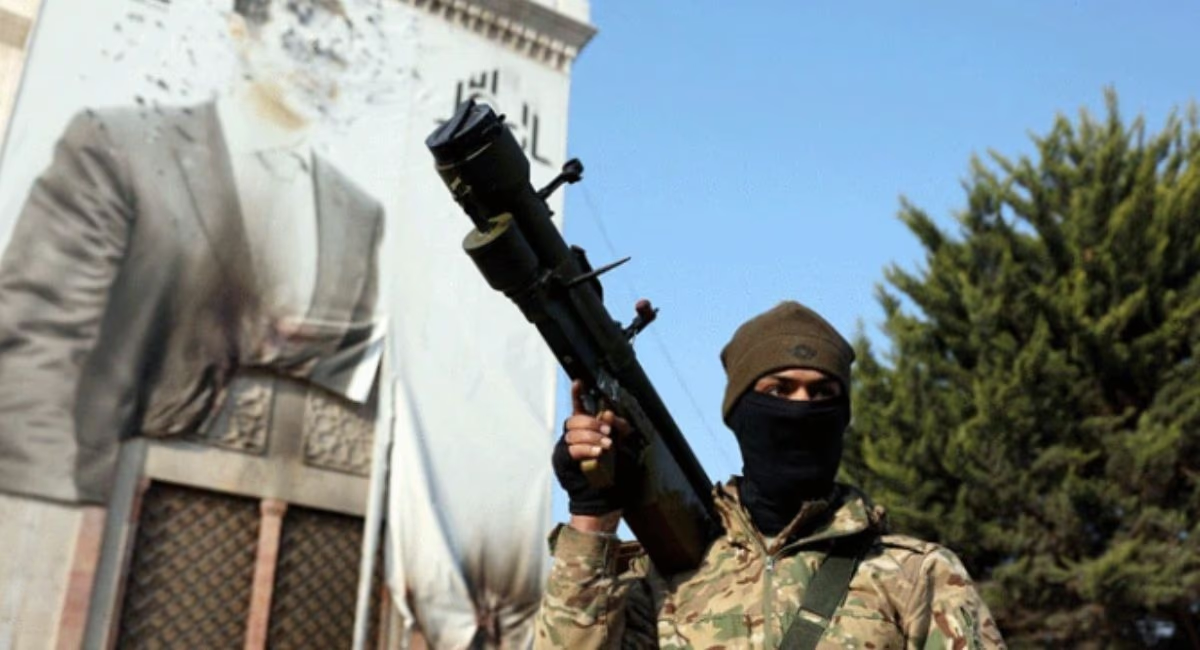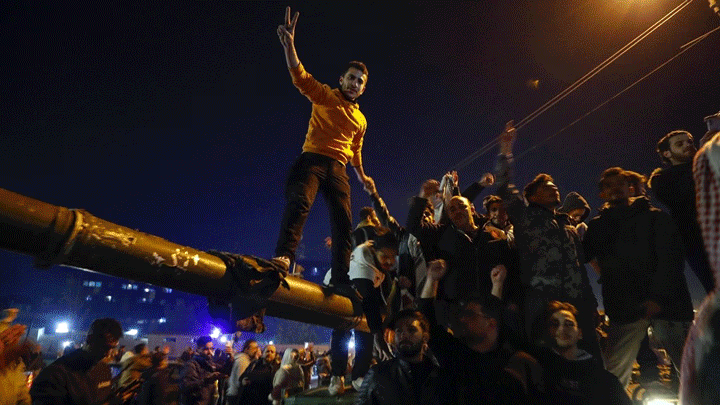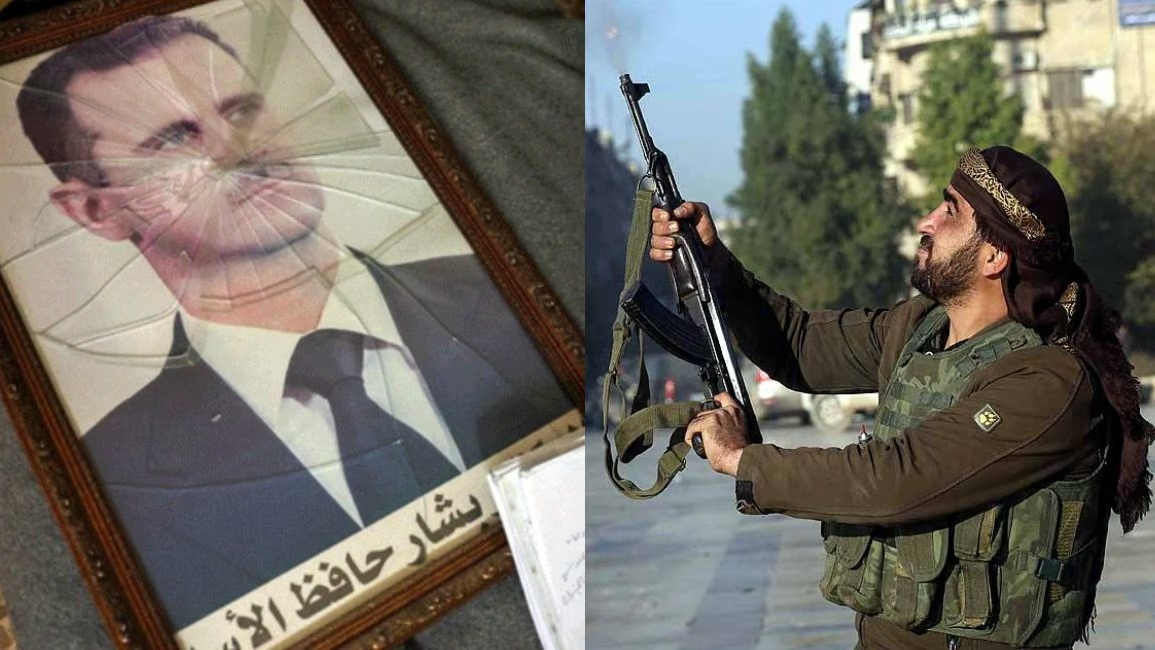The 24-year reign of Bashar al-Assad in Syria and the 13-year-long civil war have come to an end, with the capital now under the control of Hayat al-Sham. The rebel fighters triumphantly seized Damascus in just ten days and have since announced their intentions for a peaceful transition of power, requesting the Prime Minister to remain in office during this time. In this article, we delve into the significant events that transpired during these years.
The story begins in 2011, when massive demonstrations erupted in the southern city of Deraa against President Bashar al-Assad's rule, sparking nationwide protests that ultimately led to the downfall of his government. This uprising presented the gravest challenge yet to Assad's regime. With their leader vanished, reportedly leaving Damascus for an undisclosed location on a Sunday, the country hangs in suspense.
Read More:
On the departure of the army from Damascus, the Hayat forces entered the capital unhindered, signaling a decisive retreat by the regime. With joy abounding, from the streets of Homs to previously occupied regions, celebrations erupted. Throngs chanted declarations of liberation such as "Assad is gone, Homs is free" and "Long live Syria," while cries of "Allahu Akbar" resonated from mosques.

Source: aajtak
The Fight Against Bashar al-Assad's Regime
March 2011 was the month that saw intense opposition manifesting in Deraa, Syria against Bashar al-Assad's rule, which was responded to with a brutal crackdown by security forces. Notable was the arrest of young graffiti artists who had painted critical slogans, leading to widespread oppression by the Assad regime.
In June 2012, as global powers convened in Geneva to address Syria's deteriorating situation, they emphasized the necessity of a political transition. In the meantime, Assad intensified aerial assaults on rebellious cities and towns beginning in July, taking a heavy toll with thousands of casualties. By August 2011, as per United Nations data, over 2,200 people had perished, with chemical attacks contributing to the fatalities.
Despite the U.S. declaring chemical weapons deployment a red line in August 2013, no response followed the ghastly gas attack on Eastern Ghouta in Damascus under rebel control, which resulted in hundreds of civilian deaths.
January 2014 marked the rise of a faction aligned with al-Qaeda, which took over Raqqa, laying the foundation for the Islamic State across Syria and Iraq. By September, the U.S. coalition was conducting airstrikes targeting both jihadists and Assad forces.
Read More:
The period from March 2015 to March 2020 witnessed escalating violence across Syria. Different regions saw multiple factions fighting, notably challenging Assad's regime. Russia's military support for Assad changed the war's course, leading to a pro-government victory declaration for Aleppo in December 2016.

Source: aajtak
2017 saw Israel strike in Syria, aiming to undermine Hezbollah and Iran's influence supportive of Assad. In March 2017, U.S. forces launched strikes on a Syrian airbase, and by November, American-backed troops had expelled Islamic State from Raqqa.
By April 2018, bolstered by Russian aid, Assad's military reclaimed Eastern Ghouta. Subsequent victories followed in central Syria, with reduced bombing post a September 2018 Russo-Turkish agreement on Idlib. March 2019 saw the U.S. opting to maintain its military presence in Syria.
Between April and December 2019, Assad’s forces, with Russia's reinforcement, pushed back, notably reclaiming Khan Sheikhoun by July, while displacing many civilians through aerial campaigns in early 2020. Turkey positioned troops at border points as February's open borders led to Syrian refugee surges toward Greece and beyond.
A pivotal moment arose in May 2020 amid power struggles within Assad's ranks, notably with kin Rami Makhlouf's public feud. By June, the U.S. activated Caesar sanctions, while February 2021 saw renewed American airstrikes in eastern Syria. With a controversial 95% vote in May 2021, Assad secured a fourth term, as U.S. operations against Islamic State intensified in October 2024.
Read More:
The Final Battle of Hayat Tahrir al-Sham
At the outset of December 2024, Hayat Tahrir al-Sham launched a decisive offensive against Syria's lengthy civil war. Their forces seized control over the major city Aleppo, including its strategic international airport. Subsequent victories, like the takeover of Hama by December 5, posed severe setbacks to the Assad regime.
With thousands seeking refuge, the rebels compelled regime forces to abandon Homs by December 6. By December 7, the insurgents had regained their critical Deraa City position. Reports on December 8 suggested President Assad's departure, his destination yet unconfirmed.
Ultimately, Hayat Tahrir al-Sham proclaimed control over Damascus, signaling an end to five decades of Baath Party dominance and the 13-year civil war. While transitioning political power peacefully, the rebels allowed interim governance under Prime Minister Mohammad Ghazi Jalali until further notice. The future trajectory of Syria, now under new governance, remains an intriguing watch.




